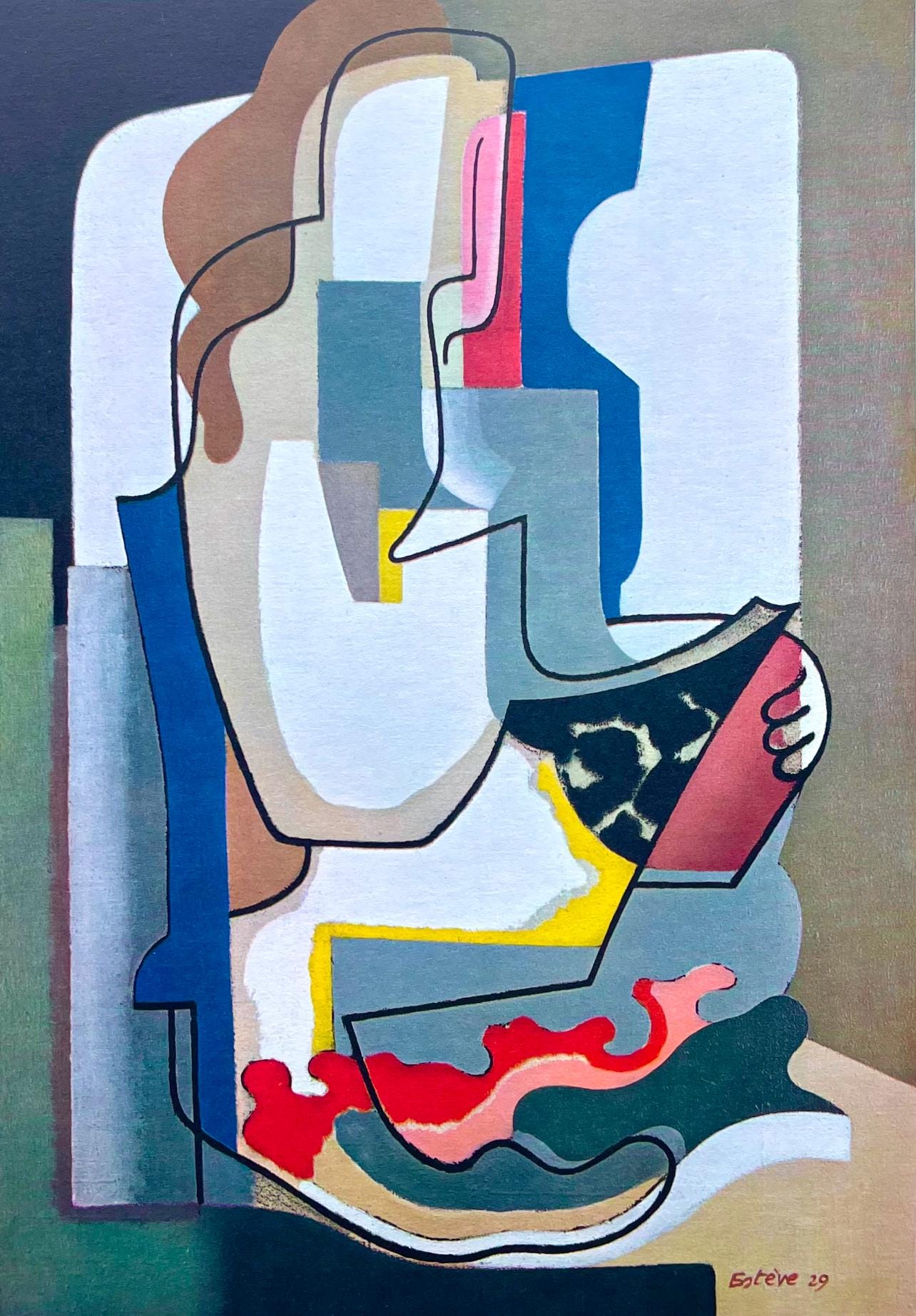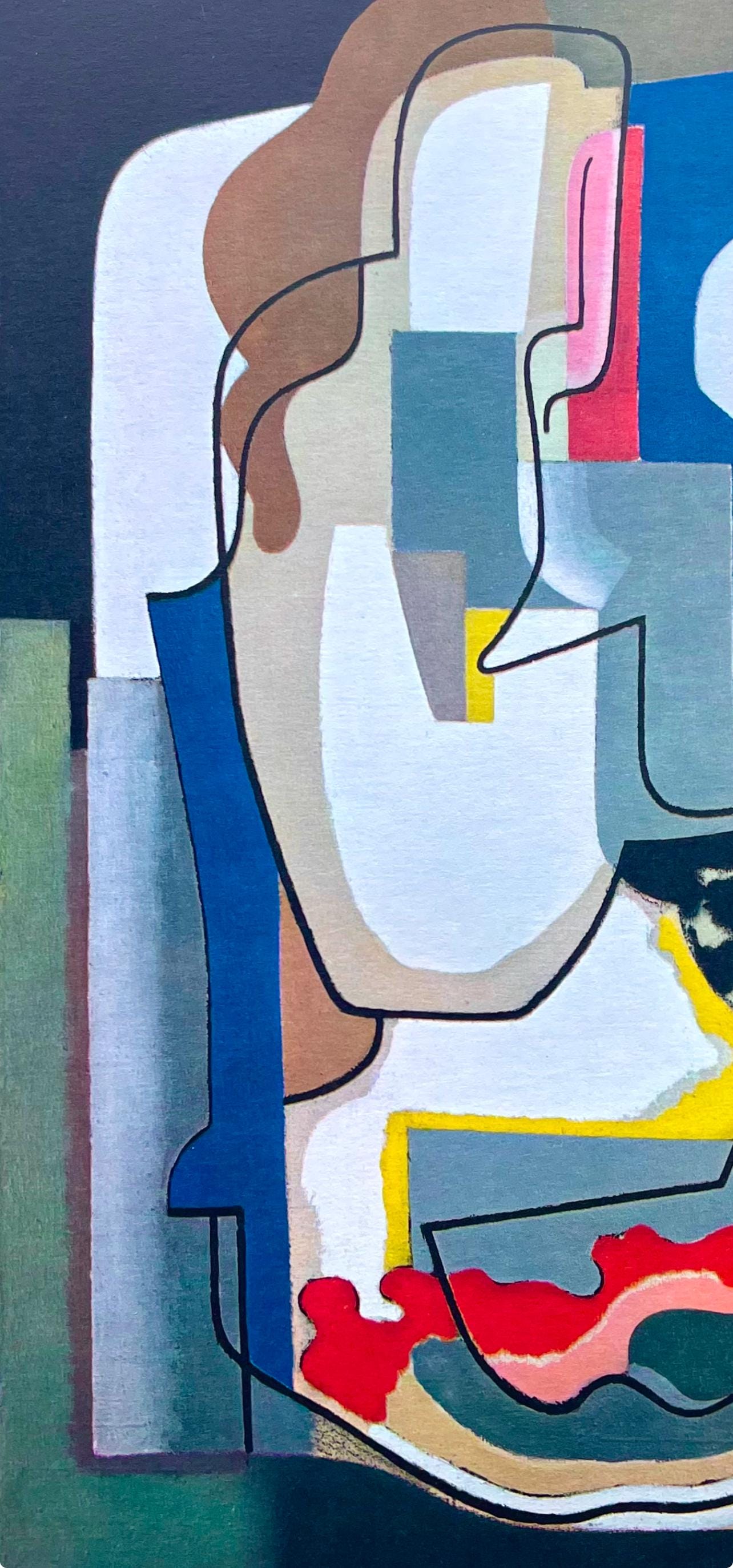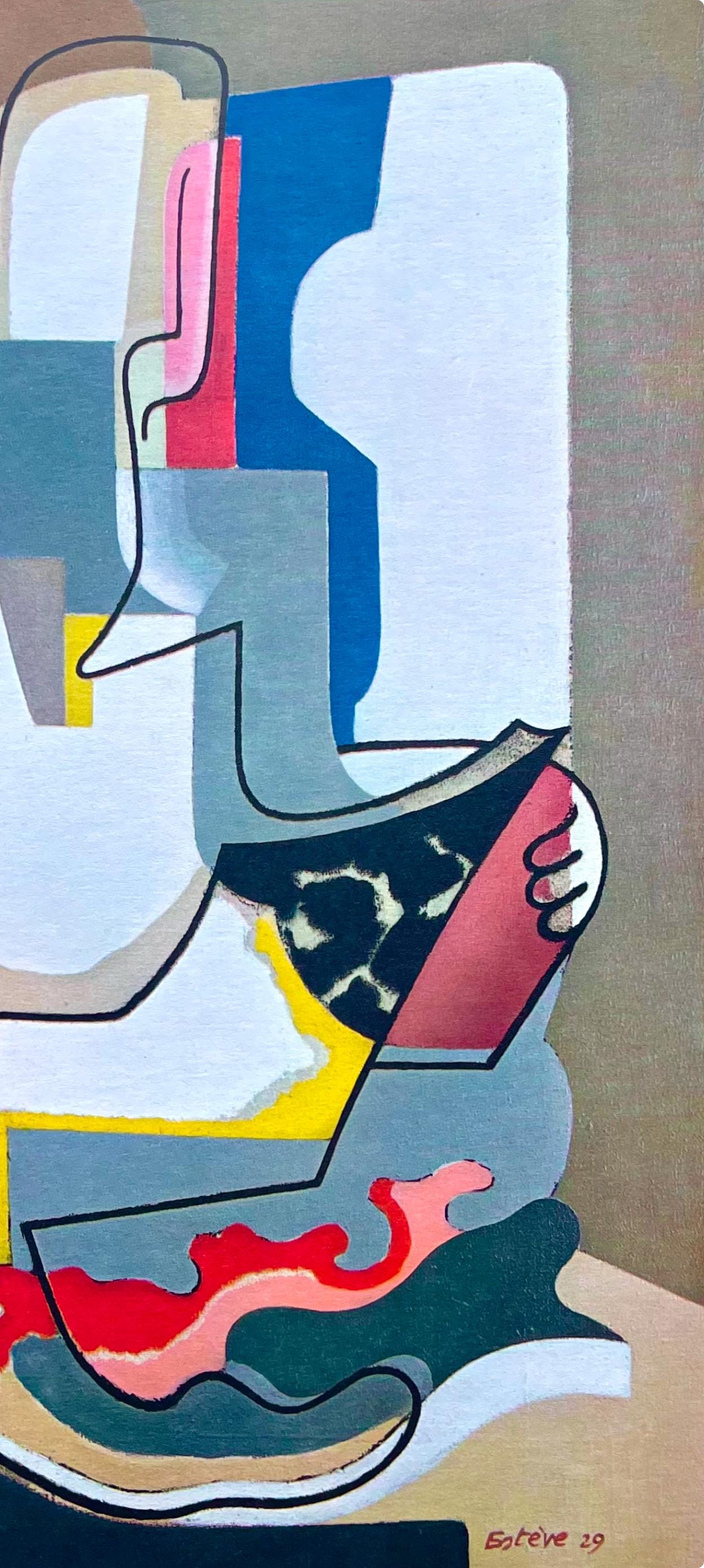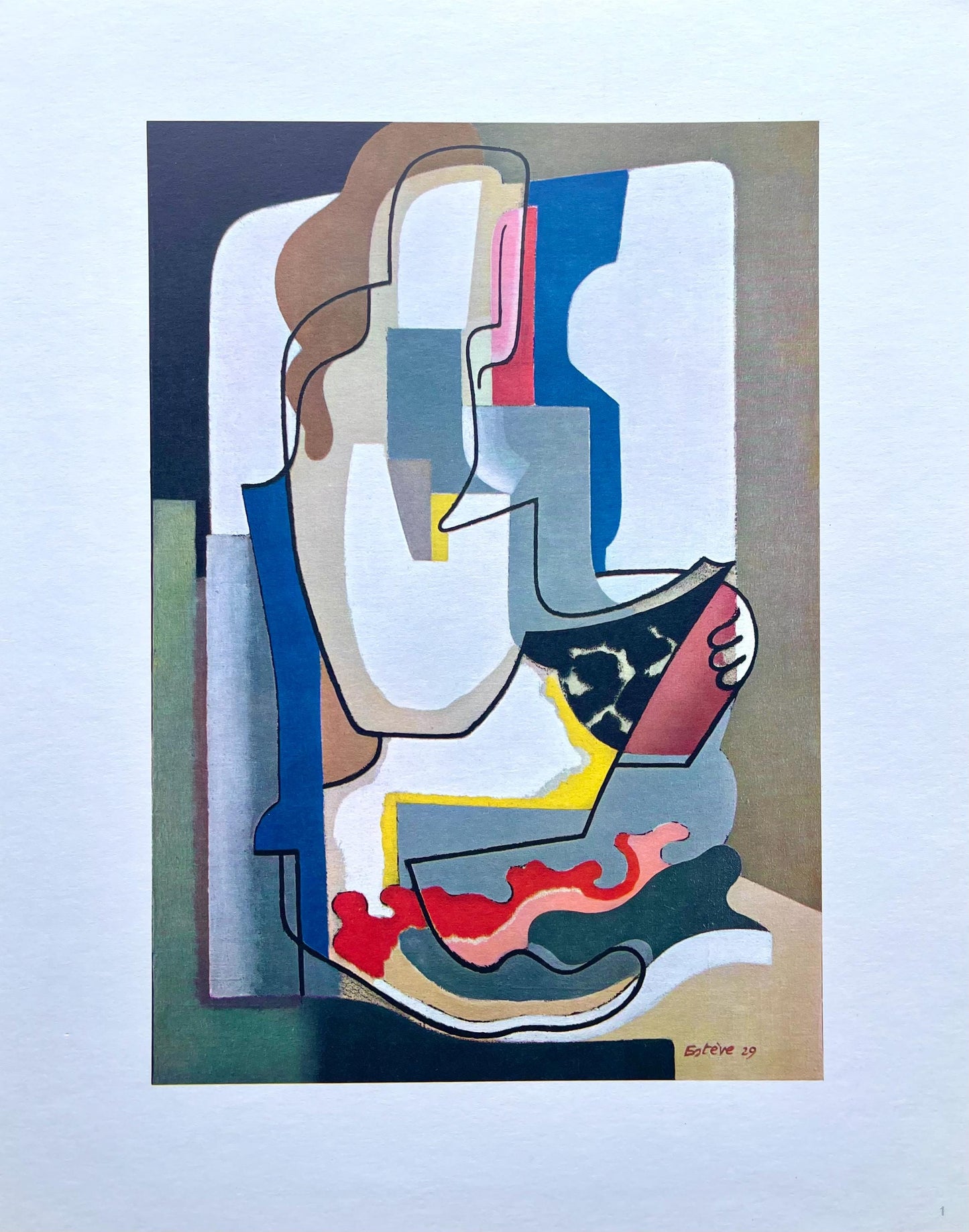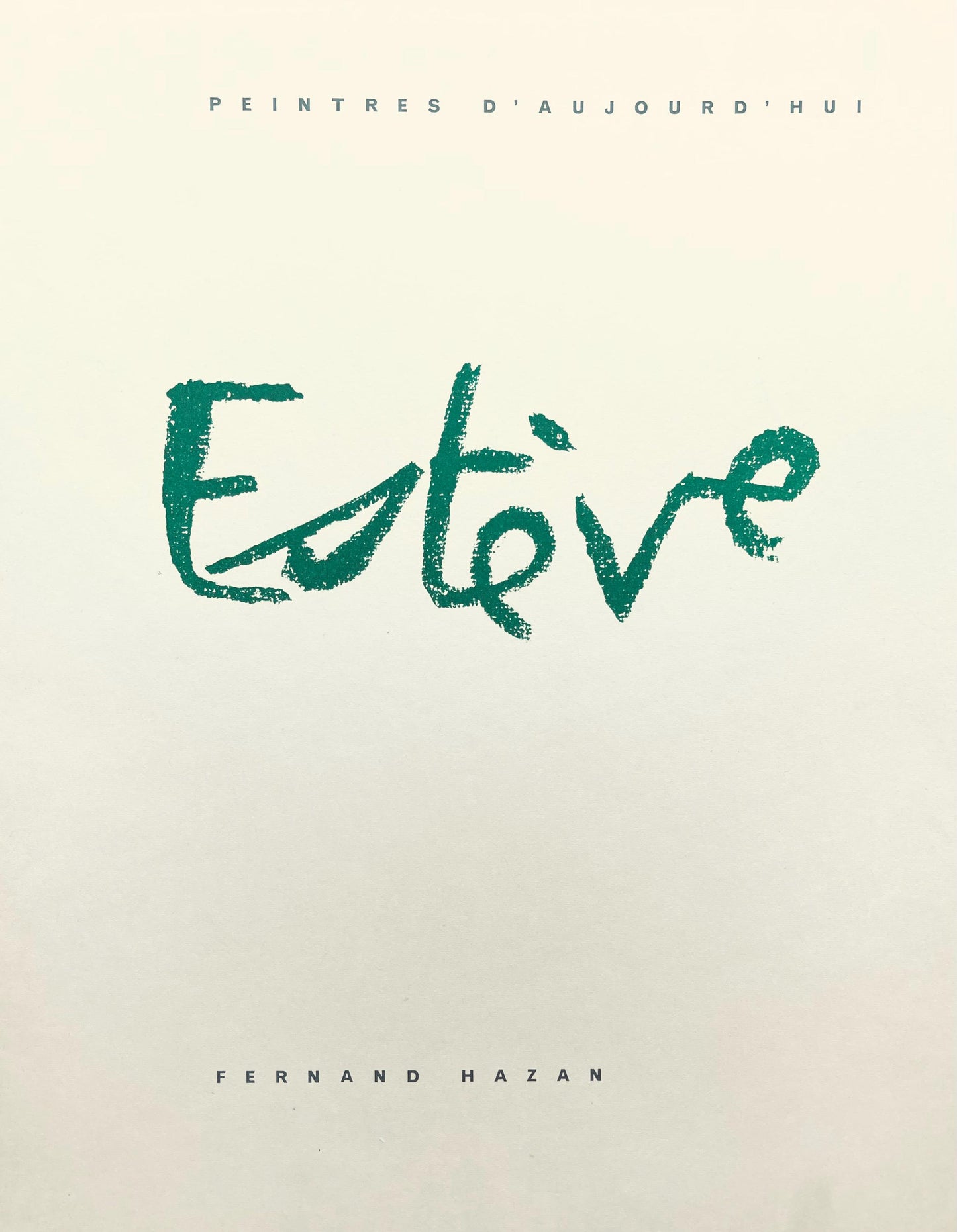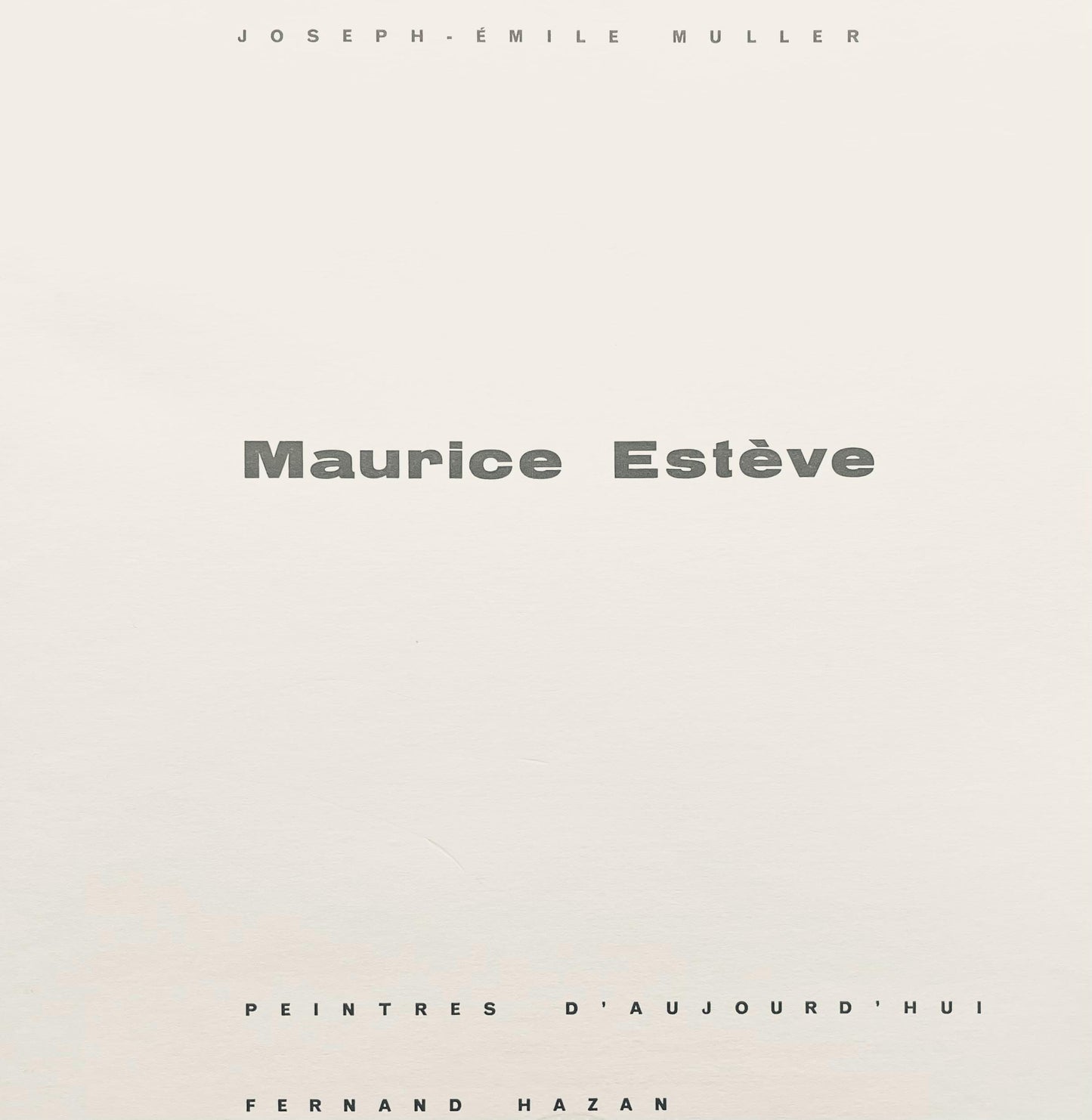1
/
of
8
Auction Ended: September 08, 2025
Post-Auction Sale Ends in:
Maurice Estve, Composition, Maurice Estve, Peintres D'Aujourd'Hui, Lithograph
Maurice Estve, Composition, Maurice Estve, Peintres D'Aujourd'Hui, Lithograph
Regular price
$806.88 USD
Regular price
$0.00 USD
Sale price
$806.88 USD
Unit price
/
per
Couldn't load pickup availability
Condition: Pre-Owned
Lithograph on vlin paper. Paper Size: 14.173 x 11.181 inches. Excellent condition. Inscription: Unsigned and unnumbered, as issued. From the folio, Maurice Estve: Peintres d'aujourd'hui, 1961. Published by Fernand Hazan, Paris; printed by l'Imprimerie Lecot, Paris, June, 1961. Excerpted from the folio (translated from French), The illustrations of this album, completed in June 1961, were made by Bussire and Nouel, and drawn by l'Imprimerie Lecot. The text has been comp......
Lithograph on vlin paper. Paper Size: 14.173 x 11.181 inches. Excellent condition. Inscription: Unsigned and unnumbered, as issued. From the folio, Maurice Estve: Peintres d'aujourd'hui, 1961. Published by Fernand Hazan, Paris; printed by l'Imprimerie Lecot, Paris, June, 1961. Excerpted from the folio (translated from French), The illustrations of this album, completed in June 1961, were made by Bussire and Nouel, and drawn by l'Imprimerie Lecot. The text has been comp......
Condition: Pre-Owned
Lithograph on vlin paper. Paper Size: 14.173 x 11.181 inches. Excellent condition. Inscription: Unsigned and unnumbered, as issued. From the folio, Maurice Estve: Peintres d'aujourd'hui, 1961. Published by Fernand Hazan, Paris; printed by l'Imprimerie Lecot, Paris, June, 1961. Excerpted from the folio (translated from French), The illustrations of this album, completed in June 1961, were made by Bussire and Nouel, and drawn by l'Imprimerie Lecot. The text has been composed and drawn by l'Imprimerie Darantiere, and the binding made by F.I.A.P. according to the models of Marcel Jacno.
MAURICE ESTEVE (1904-2001), was a French painter. Maurice Estve was born in the French town of Culan (Dpartement Cher) on 2 May 1904. In 1913 he moved to Paris with his parents, where he soon began his education as an artist. Estve worked for a year as designer in a textile factory in Barcelona 1923. During his visits to the Louvre in the 1920s, Estve was particularly impressed by the painters Jean Fouquet and Paolo Uccello. Among the modern artists, Paul Czanne had the greatest influence on Estve. Maurice Estve was largely self-educated, having only attended the free studio of the Acadmie Colarossi in 1924, where he tried to constructively implement of his motifs according to the model of Georges Braque and Fernand Lger, thus creating a kind of Cubist Fauvism. Estve began to move away from realism in 1928, and was influenced in the following years by Lger, Matisse, Picasso, and Bonnard. His first one-man exhibition was given at the Galerie Yvangot, Paris, 1930. He worked as assistant to Robert Delaunay on huge decorative panels for the 1937 Paris International Exhibition. In the 1940s his stylized figure, still-life and landscape compositions with strong colors gradually became completely abstract, with tight-knit interlocking shapes in rich, bold colors. Has made a number of watercolors and collages, and designed stained glass in 1957 for a church at Berlincourt in the Bernese Jura. Estve's extensive work was not limited to the genre of painting. He was also active in collage, textile design and murals. Estve avoided the extrovert circles of Avant-garde but still belonged to the core of the artists who brought about the breakthrough of cole de Paris after 1945. Maurice Estve took part in the Venice Biennale in 1954. His uvre, just like the works of his art colleagues Riopelle and Bazaine, established a new pictorial language: Lyrical abstractions with the aim of depicting form and color with an almost poetic attitude. His works have established themselves in many well-known museums and collections around the world.
Product Disclaimer: Please review the full description and photos. Lithographs may be plate-signed, hand-signed, or slab-signed and can include a COA (see images); edition numbers shown may vary from the one shipped. Pricing reflects signature type—hand-signed pieces carry a premium and are clearly labeled. 'After' or 'nach' indicates an authorised lithographic reproduction in the style of the named artist, not a unique original. For inquiries, please reach out to support@seuyco.com. By registering for or placing a bid in any SEUYCO auction, you confirm that you have read, understood, and agree to our Shipping, Payment, and Auction Policies.
Lithograph on vlin paper. Paper Size: 14.173 x 11.181 inches. Excellent condition. Inscription: Unsigned and unnumbered, as issued. From the folio, Maurice Estve: Peintres d'aujourd'hui, 1961. Published by Fernand Hazan, Paris; printed by l'Imprimerie Lecot, Paris, June, 1961. Excerpted from the folio (translated from French), The illustrations of this album, completed in June 1961, were made by Bussire and Nouel, and drawn by l'Imprimerie Lecot. The text has been composed and drawn by l'Imprimerie Darantiere, and the binding made by F.I.A.P. according to the models of Marcel Jacno.
MAURICE ESTEVE (1904-2001), was a French painter. Maurice Estve was born in the French town of Culan (Dpartement Cher) on 2 May 1904. In 1913 he moved to Paris with his parents, where he soon began his education as an artist. Estve worked for a year as designer in a textile factory in Barcelona 1923. During his visits to the Louvre in the 1920s, Estve was particularly impressed by the painters Jean Fouquet and Paolo Uccello. Among the modern artists, Paul Czanne had the greatest influence on Estve. Maurice Estve was largely self-educated, having only attended the free studio of the Acadmie Colarossi in 1924, where he tried to constructively implement of his motifs according to the model of Georges Braque and Fernand Lger, thus creating a kind of Cubist Fauvism. Estve began to move away from realism in 1928, and was influenced in the following years by Lger, Matisse, Picasso, and Bonnard. His first one-man exhibition was given at the Galerie Yvangot, Paris, 1930. He worked as assistant to Robert Delaunay on huge decorative panels for the 1937 Paris International Exhibition. In the 1940s his stylized figure, still-life and landscape compositions with strong colors gradually became completely abstract, with tight-knit interlocking shapes in rich, bold colors. Has made a number of watercolors and collages, and designed stained glass in 1957 for a church at Berlincourt in the Bernese Jura. Estve's extensive work was not limited to the genre of painting. He was also active in collage, textile design and murals. Estve avoided the extrovert circles of Avant-garde but still belonged to the core of the artists who brought about the breakthrough of cole de Paris after 1945. Maurice Estve took part in the Venice Biennale in 1954. His uvre, just like the works of his art colleagues Riopelle and Bazaine, established a new pictorial language: Lyrical abstractions with the aim of depicting form and color with an almost poetic attitude. His works have established themselves in many well-known museums and collections around the world.
Product Disclaimer: Please review the full description and photos. Lithographs may be plate-signed, hand-signed, or slab-signed and can include a COA (see images); edition numbers shown may vary from the one shipped. Pricing reflects signature type—hand-signed pieces carry a premium and are clearly labeled. 'After' or 'nach' indicates an authorised lithographic reproduction in the style of the named artist, not a unique original. For inquiries, please reach out to support@seuyco.com. By registering for or placing a bid in any SEUYCO auction, you confirm that you have read, understood, and agree to our Shipping, Payment, and Auction Policies.
+ Read More
